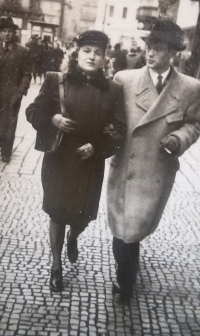I lived a whole century. I appreciated most T. G. Masaryk and Václav Havel

Download image
Věra Kazdová, née Pavlíková, was born on the 9th of June in 1921 in the Prague neighbourhood of Smíchov to the family of Antonie and Hynek Pavlík. Her father was a construction engineer, her mother had attended Business Academy and before the children were born, she worked as a secretary in a law firm. Věra had a sister younger by three years, Libuše. At the time of recording her memories, Věra Kazdová was 100 years old. She vividly described her childhood during the First Republic, the moods and events of the Protectorate or how she witnessed the events of the 1968 occupation. She grew up in the Prague neighbourhoods of Smíchov and Vysočany, for some time, she lived in Slané. Her family were active members of the Sokol gymnastics club, they knew several Sokols from Vysočany who were executed by the Nazis. In 1932, when she was 11, she participated in the Sokol mass gymnastics festival. In 1939, she graduated from the school for ladies’ vocations and then she worked as a seamstress in a dressmaking workshop. She remembers air raids in Prague and how she helped to build barricades in the Smíchov neighbourhood during the liberation fighting. In 1947, she married to a law student, Miroslav Kazda. Throughout her life, she held various clerical jobs in Pražské komunikace [Prague communication, road maintenance company], Pražské lázně [Prague Baths] and the Tesla company. She recalls her onetime superior, Adolf Burger, a former Jewish prisoner whom the Nazis forced to forge banknotes in the so-called „Devil’s workshop“. She was never active in politics as she concetrated on her private life.













